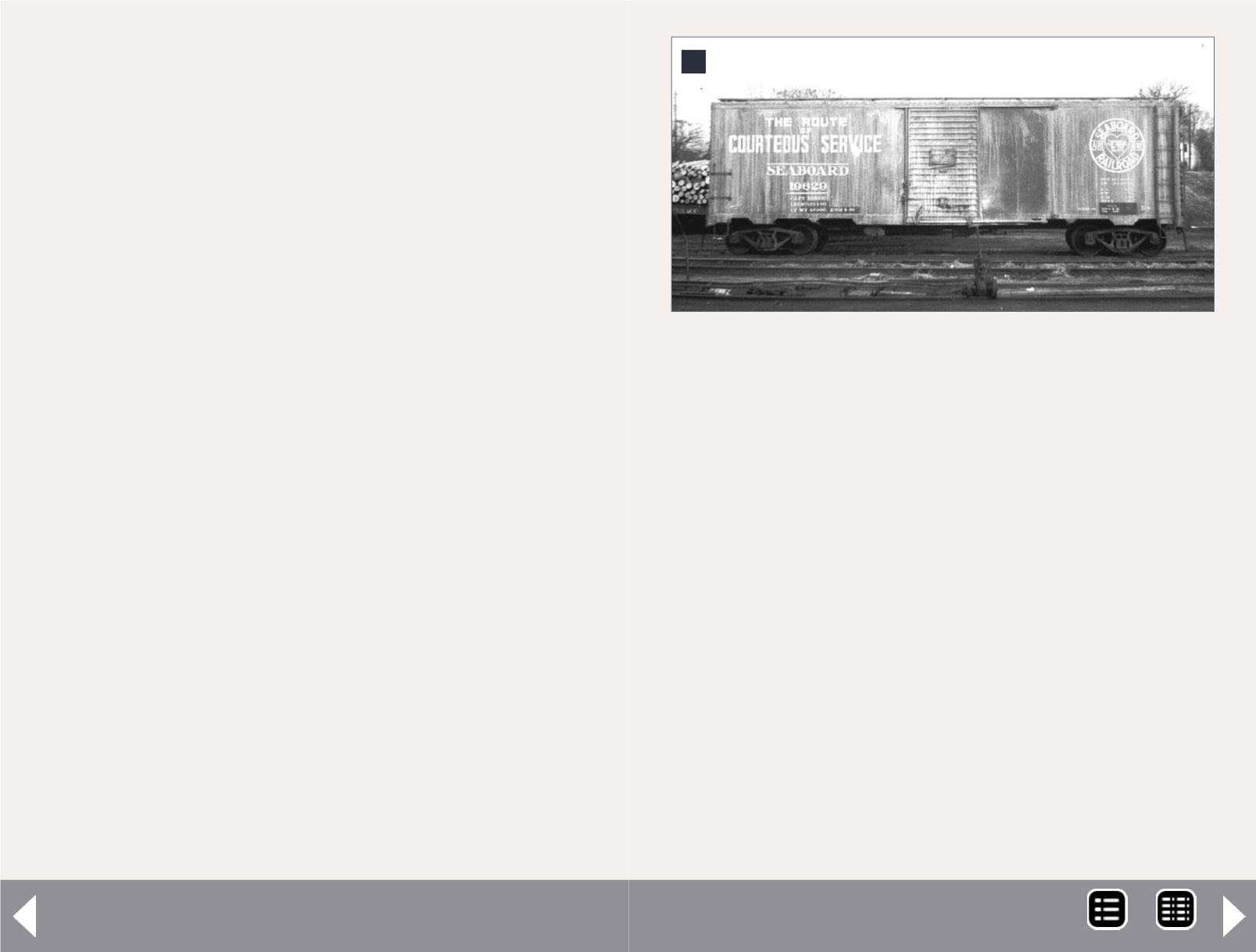
Railway of Alabama, Georgia Railroad, and the Atlanta and
West Point. The Seaboard cars, however, were specified as 10’
0” interior height cars, whereas other War Emergency box cars
were specified as a 10’ 6” IH cars.
The B-8s were the first modern SAL cars to be delivered with
car cement (black) roofs. During the late WWII and post-WWII
era, Seaboard took delivery of several car series with car
cement (black) roofs. Photo evidence clearly shows that many
cars repainted in the post-war era also received black roofs,
and some even got black roofs and ends.
The application of car cement or black paint was not consis-
tent, so in this era cars from the same class may have appeared
with freight car brown roofs and ends, or black car cement
roofs, in any combination. The B-8s and B-9s were delivered
with car cement roofs, and cars repainted through the early
1950s may have had their roofs re-sealed with car cement.
Repaints after the early 1950s got a complete freight car brown
body, including roof, underframe and trucks.
The car cement used in the post-war era did not adhere well
to galvanized metal, and it tended to deteriorate quickly when
exposed to extreme weather. Caustic coal smoke and ash
from steam engines may have contributed to deterioration.
The result was that the car cement tended to flake or peel off
the roof structure, exposing untreated galvanized metal roof
sheets. In many cases, the car cement would remain on the
roof seam caps but partially or completely flaked off the galva-
nized metal surface, leaving a silver-gray roof with black seam
caps until the roof could be repainted or sealed again.
Other SAL cars delivered in the post-WWII era, such as the
B-10 and AF-3, were also delivered with car cement roofs.
Interestingly, the AF-4 and A-2 automobile cars delivered
in 1948 were received with car cement roofs and ends.
Conversely, the AF-5 automobile cars, delivered in 1948, were
received with freight car brown roofs and ends. This practice
ended with delivery of the B-10 PS-1 cars in series 25000-
25499, delivered in March 1952.
The B-9 cars
A further 300 1937 AAR cars were delivered to Seaboard in two
lots in 1945. Both lots followed the 1937 design with 10’ 0”
interior height, 4-5 dreadnaught ends, and Murphy roofs. Both
lots were classified B-9 by the railroad. Unlike the B-8s, the new
cars featured a few differences that are worthy of note
The first 250 B-9s, Pullman Lot 5804, arrived from Bessemer in
September 1945. The cars were numbered 19700-19949. They
3
3. SAL B-8 19629 was photographed at Raleigh NC in
1963. This car has been in bulk paint or clay service
and is the victim of a large amount of spillage. Note
the paint patches with new data. These could be in
freight car brown or black. Warren Calloway photo.
Seaboard B8 & B9 - 3
MRH-Jun 2014


